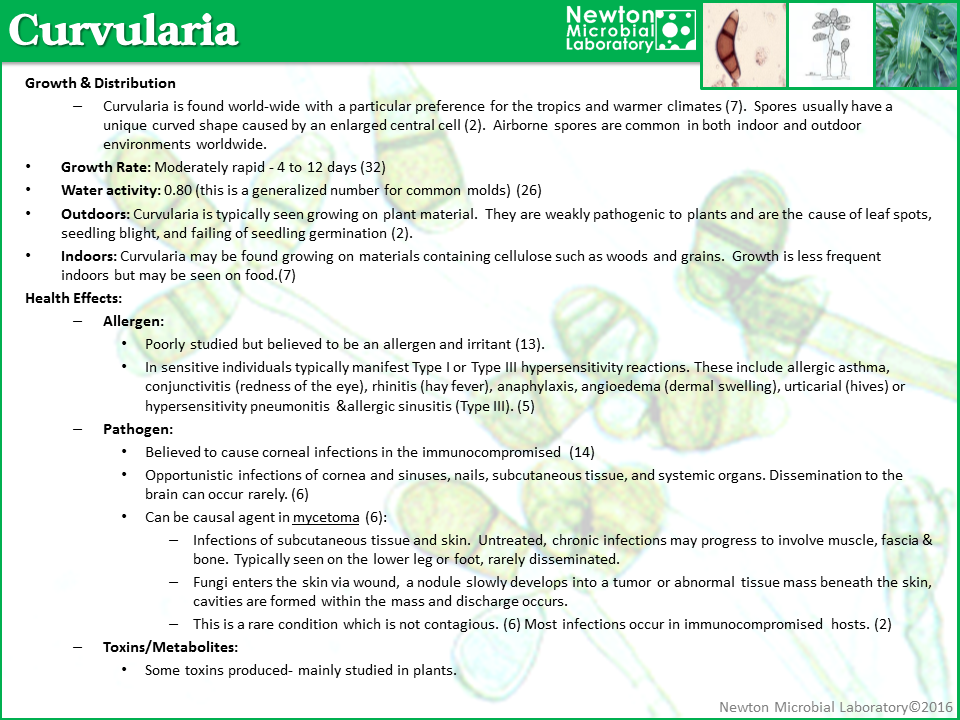Curvularia
Growth & Distribution
Curvularia is found world-wide with a particular preference for the tropics and warmer climates (7). Spores usually have a unique curved shape caused by an enlarged central cell (2). Airborne spores are common in both indoor and outdoor environments worldwide.
Growth Rate: Moderately rapid – 4 to 12 days (32)
Water activity: 0.80 (this is a generalized number for common molds) (26)
Outdoors: Curvularia is typically seen growing on plant material. They are weakly pathogenic to plants and are the cause of leaf spots, seedling blight, and failing of seedling germination (2).
Indoors: Curvularia may be found growing on materials containing cellulose such as woods and grains. Growth is less frequent indoors but may be seen on food.(7)
Health Effects
Allergen:
Poorly studied but believed to be an allergen and irritant (13).
In sensitive individuals typically manifest Type I or Type III hypersensitivity reactions. These include allergic asthma, conjunctivitis (redness of the eye), rhinitis (hay fever), anaphylaxis, angioedema (dermal swelling), urticarial (hives) or hypersensitivity pneumonitis &allergic sinusitis (Type III). (5)
Pathogen:
Believed to cause corneal infections in the immunocompromised (14)
Opportunistic infections of cornea and sinuses, nails, subcutaneous tissue, and systemic organs. Dissemination to the brain can occur rarely. (6)
Can be causal agent in mycetoma (6):
Infections of subcutaneous tissue and skin. Untreated, chronic infections may progress to involve muscle, fascia & bone. Typically seen on the lower leg or foot, rarely disseminated.
Fungi enters the skin via wound, a nodule slowly develops into a tumor or abnormal tissue mass beneath the skin, cavities are formed within the mass and discharge occurs.
This is a rare condition which is not contagious. (6) Most infections occur in immunocompromised hosts. (2)
Toxins/Metabolites:
Some toxins produced- mainly studied in plants.

